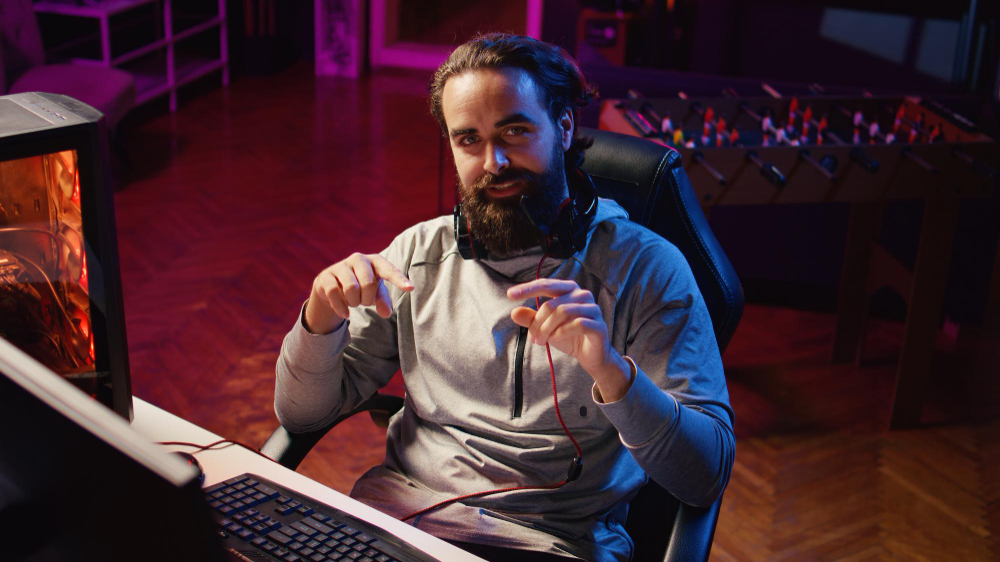Unleashing the Power of Precision: Your Comprehensive Guide to Vector Tracing Freelance Services
Table of Contents
- Introduction to Vector Tracing
- The Need for Freelance Vector Tracing Services
- Services Offered by Freelance Vector Tracers
- The Process of Vector Tracing
- How to Choose the Right Freelance Vector Tracer
- Concluding Thoughts
Introduction to Vector Tracing
Diving deeper into the captivating universe of Vector Tracing, we unravel a technique that meticulously blends accuracy with creativity. It is an art form where ideas are given a vibrant, scalable identity. To understand the concept better, let's initially differentiate between two key terms - raster images and vector images.
Raster images are pixel-based graphics. When you zoom into a raster image, it becomes pixilated, and the quality diminishes. On the contrary, vector images are created using mathematical formulas. They consist of points, lines, and curves, and you can resize them to any extent without compromising their quality. They remain sharp, clear, and precise, regardless of how much they are scaled, making them a popular choice for numerous professional applications.
Vector Tracing, also known as Vector Conversion or Vectorization, is the process of transforming a raster image into a vector format. To achieve this conversion, specific software such as Adobe Illustrator, CorelDRAW, or Inkscape is used. The technique involves redrawing the image manually or using automated tools within the software. Regardless of the method, the end result is a high-resolution, scalable graphic that can be used for a myriad of applications. It retains its integrity, sharpness, and detail, regardless of how much it is enlarged or reduced.
In the hands of a skilled vector artist, this technique brings new life to drawings, logos, illustrations, and photos. The process allows for far greater control over the final image, enabling changes to color, shape, and size with relative ease. It is a preferred method for creating logos, brand marks, and other graphics that need to be displayed across a variety of mediums and sizes, from business cards to large billboards.
In the next era of digital design, vector tracing has become an invaluable asset. It is continually evolving to match the pace of the ever-growing technological advancements and the increasing need for high-quality digital content. It stands as an artistic pillar that embraces the precision of technology without sacrificing the organic quality that comes with human touch and creativity. Whether you're an artist, designer, brand strategist, or a hobbyist, the value that vector tracing brings to your project is undoubtedly profound and transformative.
The Need for Freelance Vector Tracing Services
The visual representation of a brand or idea has gained unprecedented importance. We live in an era defined by connectivity, and your online presence can often make the difference between success and failure. This importance has brought the need for high-quality images to the forefront of digital strategy, making Vector Tracing Freelance Services an invaluable asset.
The heart of any brand or online identity is the graphics and imagery associated with it. These visuals help to define the brand, connect with customers, and drive engagement. However, not all images are created equal. Standard raster images, which are made up of tiny pixels, can become pixelated or blurry when resized. This is where vector images excel - their scalability without loss of quality makes them an ideal choice for branding materials, logos, and other professional design needs.
The digital landscape is highly competitive, and businesses need to put their best foot forward. A blurred or pixelated logo on a website or a banner can detract from the credibility of the brand. To avoid this, many businesses are now turning to freelance vector tracers to convert their raster images into clear, sharp vector images that can be resized for any purpose without compromising on quality.
Freelance vector tracing services offer a range of benefits over traditional design agencies. First, they tend to offer a more personalized service. They work closely with the client, providing individual attention and bespoke solutions. This direct communication can lead to a more accurate realization of the client's vision.
Second, freelance vector tracers offer competitive pricing. Without the overheads associated with a traditional agency, freelancers can provide their services at a more affordable rate. They can also offer flexible pricing models, from per project to hourly rates, depending on the scope and complexity of the work.
Lastly, freelancers can offer faster turnaround times. Since they manage their schedules, they can often start work on a project immediately, meaning you get your final product quicker. This can be a crucial factor for businesses operating in fast-paced industries, where timing can make all the difference.
In summary, the need for Freelance Vector Tracing Services is driven by the demand for high-quality, scalable images in the digital era. These services provide a cost-effective, flexible, and personalized solution, ensuring that your brand or project stands out in the digital crowd.
Services Offered by Freelance Vector Tracers
Vector Tracing Freelance Services have emerged as a one-stop solution for a wide variety of graphic design needs. Catering to businesses, agencies, and individuals, these professionals use advanced vector tracing techniques to ensure top-notch image quality that can help elevate your brand identity, enhance marketing efforts, and fulfill various other design needs. Here are some of the key services offered by freelance vector tracers:
1. Logo Design and Conversion: Your brand's logo is the cornerstone of your identity. Freelance vector tracers can create new logos or convert existing raster logos into vector format. A vector logo ensures crispness and clarity, no matter the size, making it ideal for different uses from business cards to billboards.
2. Image Conversion: This service involves converting raster images (JPEGs, PNGs, BMPs, etc.) into vector format. The process results in an image with infinitely scalable properties, ensuring it remains high-quality regardless of its size or the medium it is printed on.
3. Image Restoration: Freelance vector tracers also offer image restoration services. If you have old, faded, or damaged photos, they can be restored to their original quality. The images are meticulously traced and restored, resulting in a vectorized image that can be enlarged without losing any detail.
4. Banner and Poster Design: Whether it's for digital marketing or a physical event, banners and posters play a vital role in attracting attention. Freelancers can design and create scalable, high-quality vector images for your banners and posters, ensuring they look perfect at any size.
5. Icon and Infographic Design: Icons and infographics are powerful communication tools in today's information-heavy world. Freelance vector tracers can create unique, eye-catching icons and infographics that can be resized for any platform without losing quality.
6. Typography and Font Design: Words matter, but so does how those words are presented. Vector tracing services can include the creation or conversion of custom fonts and typography. This ensures crisp, clear text that can scale without becoming pixelated or distorted.
7. Artwork Digitization: If you're an artist seeking to digitize your physical artwork, vector tracing can help. Freelancers can convert your drawings, paintings, or sketches into digital vector format, making them easier to reproduce and distribute without losing quality.
8. Blueprint and Schematic Conversion: For architects, engineers, and designers, converting blueprints and schematics into a vector format can provide scalable, easy-to-edit files.
By leveraging the broad spectrum of services offered by freelance vector tracers, you can ensure your visuals are always crisp, clear, and highly engaging, regardless of where they're displayed or how they're used. The value added by these services extends far beyond the quality of the visuals - it is reflected in the enhanced perception of your brand, the effectiveness of your communication, and ultimately, your success in the digital world.
The Process of Vector Tracing
Vector Tracing, also known as Vectorization, is a method that requires an amalgamation of technical know-how, meticulousness, and creative flair. It is not merely a mechanistic process but an intricate craft that, when done correctly, breathes new life into images and illustrations. Let's dive into the detailed steps involved in the process of Vector Tracing:
1. Understanding the Client's Needs: The initial step involves gaining a clear understanding of the client's requirements. This may include what the final image will be used for, the desired format, the level of detail needed, and any specific design elements to consider. This consultation phase is crucial for setting clear expectations and planning the project effectively.
2. Selecting the Right Image: The chosen image for conversion plays a significant role in the end result. Images with high resolution and less complexity are easier to trace and result in better outcomes. However, professional vector tracers can also work with lower quality or complex images, but it may require more time and effort.
3. Image Analysis and Planning: The selected image is carefully analyzed to identify different shapes, colors, gradients, and details. Planning involves deciding whether to use manual tracing, automatic tracing, or a combination of both.
4. Tracing the Image: The actual tracing process involves redrawing the image using vector software such as Adobe Illustrator. In manual tracing, each shape and line is drawn individually, which offers the highest level of accuracy. Automatic tracing is faster but may not capture every detail. Often, a mix of both methods is used, depending on the image's complexity.
5. Refining the Image: Once the initial trace is complete, the image is refined. This involves smoothing out any jagged lines, adjusting shapes, and perfecting the colors and gradients. This step is crucial for ensuring the final vector image matches the original as closely as possible.
6. Review and Feedback: The vector image is then shared with the client for review. Any changes or adjustments are discussed and made at this stage. This step may be repeated several times until the client is satisfied with the outcome.
7. Final Delivery: Once the vector image meets the client's approval, it is exported in the requested formats. Common formats include .AI (Adobe Illustrator), .EPS (Encapsulated PostScript), and .SVG (Scalable Vector Graphics), among others.
The process of vector tracing demands precision, patience, and a keen eye for detail. While it can be time-consuming, especially for complex images, the result is a high-quality, scalable image that can be used across various mediums without losing its clarity or impact. It is an invaluable tool in the realm of digital design, enabling brands and individuals to communicate their visions with accuracy and artistry.
How to Choose the Right Freelance Vector Tracer
Choosing the right freelance vector tracer is a critical step to ensure the success of your project. The ideal professional is not only proficient in the technical aspects of vector tracing but also aligns with your creative vision and project goals. Here are some key factors to consider when choosing the right freelance vector tracer:
1. Experience and Expertise: Consider the freelancer's experience and area of expertise. How many years have they been in the field? What kind of projects have they worked on? The complexity and requirements of your project can guide you in selecting someone with the right level of expertise.
2. Portfolio Review: A freelancer’s portfolio is a window into their style, quality of work, and attention to detail. By reviewing their past work, you can gauge whether their style aligns with your project requirements. Look for consistency, versatility, and the ability to replicate different design styles.
3. Client Testimonials and Reviews: Client reviews and testimonials provide valuable insight into a freelancer's professionalism, reliability, and work ethic. Past clients' feedback can help you understand how the freelancer handles project timelines, communication, and customer satisfaction.
4. Understanding of Your Vision: The ideal freelancer should understand and resonate with your project vision. During your initial discussions, gauge how well they comprehend your needs and whether they can provide creative input to enhance your project.
5. Communication Skills: Effective communication is critical for any successful freelance project. Your freelancer should be responsive, clear, and concise in their communication. They should be able to update you on the project's progress regularly and be open to feedback and changes.
6. Pricing and Value: While it's essential to stay within your budget, don't let price be the only deciding factor. Cheaper rates might seem attractive, but they may not always deliver the desired quality. Aim for a balance between cost and value. Understand what's included in the price, such as revisions, turnaround time, and final file formats.
7. Turnaround Time: Ask about the freelancer's estimated turnaround time for your project. Ensure their schedule aligns with your timeline. However, remember that quality work might take time, so be realistic with your deadlines.
Choosing the right freelance vector tracer is about finding a balance between their technical abilities, understanding of your vision, work style compatibility, and cost-effectiveness. It's a collaborative partnership that, when matched correctly, can bring your ideas to life in the most visually appealing and impactful way.
Concluding Thoughts
The importance of high-quality, scalable graphics cannot be understated. It's an era where pixelation is a cardinal sin, and clarity, sharpness, and adaptability of images are the holy grail. It is here that Vector Tracing Freelance Services shine, offering a solution that marries technology with creativity, precision with versatility.
Whether you're a business aiming to solidify your brand presence with crisp logos, an agency seeking to amplify your client's marketing impact, or an individual looking to digitize your artwork without losing its essence, freelance vector tracers are your skilled partners. From logo conversion and image restoration to creating engaging banners, infographics, and custom typography, they provide a spectrum of services tailored to your unique needs.
The process of vector tracing is a testament to the blend of technical know-how, meticulous precision, and artistic acumen. The end product? High-quality, scalable images that remain true to their essence, regardless of where they're displayed or how they're used.
Choosing the right freelance vector tracer is a critical step in this journey. By considering their expertise, portfolio, understanding of your vision, communication skills, pricing, and turnaround time, you can ensure a successful partnership that brings your vision to life in the most visually appealing way.
Embracing Vector Tracing Freelance Services is not just about getting scalable images; it's about enhancing the perception of your brand, amplifying your communication impact, and ultimately, marking your success in the digital landscape. It's about bringing your ideas to life in their most visually compelling form. With the right partner, the possibilities are endless, and the visual world is yours to conquer.














